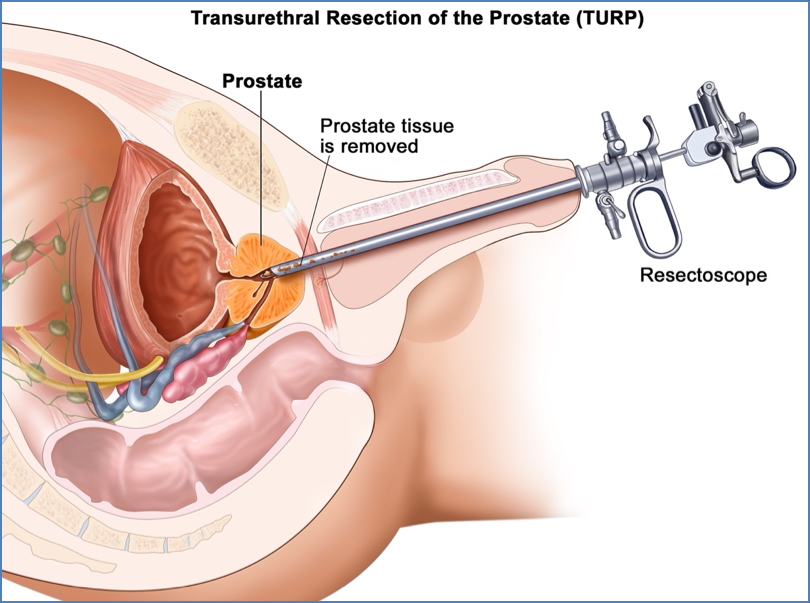Table of Contents
Overview – Benign Prostatic Hypertrophy
Benign prostatic hypertrophy (BPH) is a common non-cancerous enlargement of the prostate gland, affecting up to 75% of men over the age of 70. It is driven by hormone-induced hyperplasia and often results in lower urinary tract symptoms (LUTS) due to bladder outlet obstruction. Understanding its pathophysiology and treatment options is vital in the management of ageing male patients.
Definition
Benign prostatic hypertrophy is a non-neoplastic, hormone-induced enlargement of the prostate gland that results in urinary outflow obstruction.
Aetiology
- Not a cancerous process
- Related to hormonal influence, particularly androgens
- Age-related condition – prevalence increases significantly in men >70 years
- Castration prevents BPH due to lack of androgens
Pathogenesis
- Androgen-driven hyperplasia of both stromal and epithelial cells in the transitional zone of the prostate
- Results in prostatic enlargement that compresses the urethra
- Can encroach into the bladder neck → creates a “ball-valve mechanism” that worsens urinary retention
- May cause compensatory changes in the bladder wall and upper urinary tract:
- Bladder wall hypertrophy
- Secondary hydronephrosis


Morphology
- Gross appearance:
- Smooth, firm, nodular gland
- Median groove preserved (unlike prostate cancer)
- Encroaches into bladder lumen
- May result in bladder trabeculation or diverticuli
Clinical Features
Symptoms – LUTS (Lower Urinary Tract Symptoms):
- Urinary urgency
- Increased frequency
- Hesitancy and dribbling
- Nocturia
- Reduced flow rate
- Incomplete emptying
- In severe cases → acute urinary retention
Management
Medical Treatment
- Finasteride (5-alpha-reductase inhibitor):
- Reduces prostate size
- Slow onset of action
- Alpha blockers (e.g., tamsulosin):
- Relax smooth muscle at bladder neck
- Improve flow and relieve obstruction
Surgical Treatment
- TURP (Transurethral Resection of the Prostate):
- Gold standard for refractory or complicated BPH
- Risks: Impotence, bleeding, TURP syndrome (rare)


Complications
- Urinary tract infections (UTIs) → Cystitis
- Bladder diverticuli
- May lead to rupture → Uroperitoneum
- Hydronephrosis due to backpressure
Summary – Benign Prostatic Hypertrophy
Benign prostatic hypertrophy is a hormone-driven enlargement of the prostate that affects a majority of elderly men and leads to urinary symptoms and complications if untreated. Medical therapy with finasteride or alpha-blockers is often effective, while surgery like TURP may be required in severe cases. For a broader context, see our Reproductive Health Overview page.